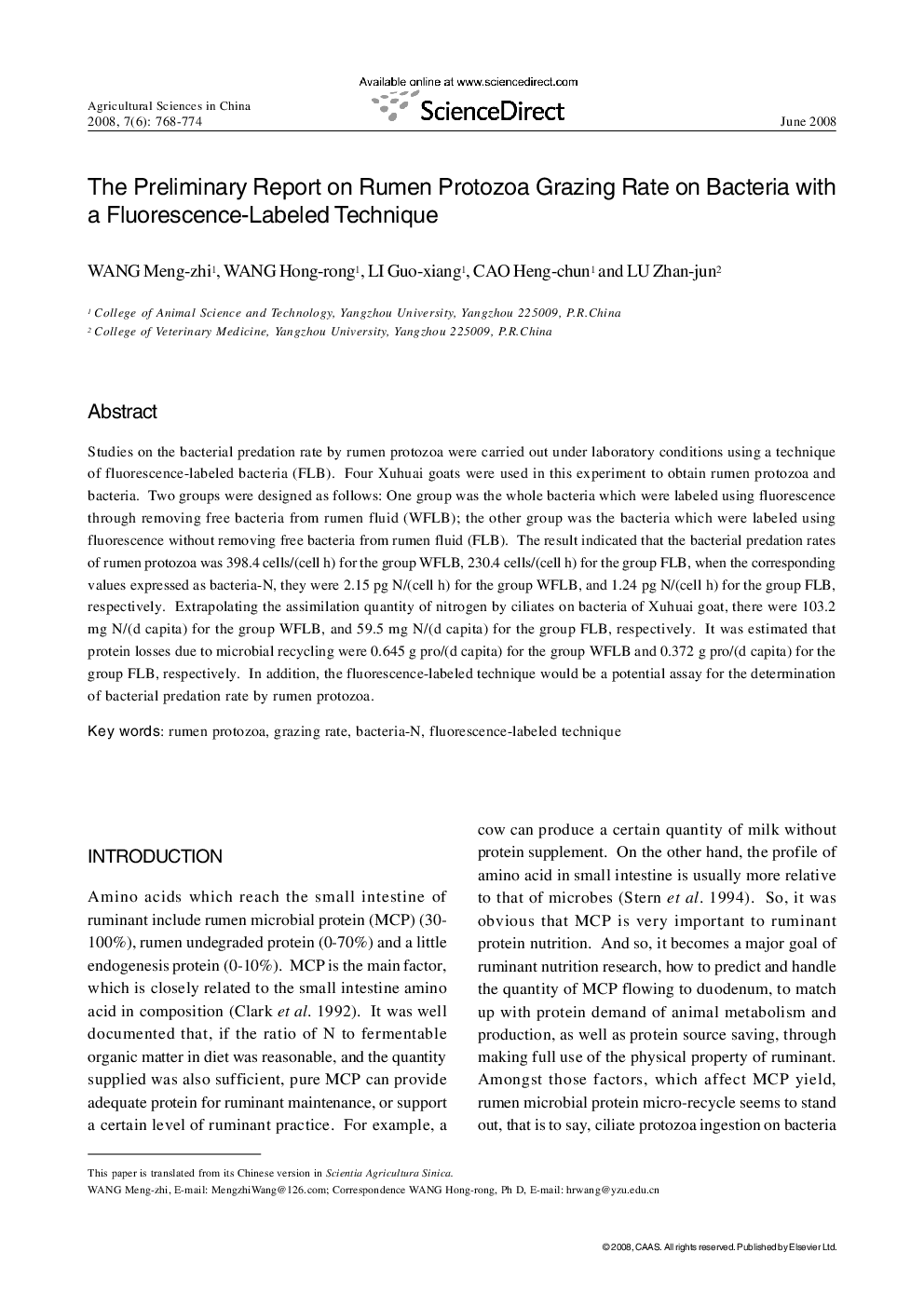| Article ID | Journal | Published Year | Pages | File Type |
|---|---|---|---|---|
| 4490594 | Agricultural Sciences in China | 2008 | 7 Pages |
Studies on the bacterial predation rate by rumen protozoa were carried out under laboratory conditions using a technique of fluorescence-labeled bacteria (FLB). Four Xuhuai goats were used in this experiment to obtain rumen protozoa and bacteria. Two groups were designed as follows: One group was the whole bacteria which were labeled using fluorescence through removing free bacteria from rumen fluid (WFLB); the other group was the bacteria which were labeled using fluorescence without removing free bacteria from rumen fluid (FLB). The result indicated that the bacterial predation rates of rumen protozoa was 398.4 cells/(cell h) for the group WFLB, 230.4 cells/(cell h) for the group FLB, when the corresponding values expressed as bacteria-N, they were 2.15 pg N/(cell h) for the group WFLB, and 1.24 pg N/(cell h) for the group FLB, respectively. Extrapolating the assimilation quantity of nitrogen by ciliates on bacteria of Xuhuai goat, there were 103.2 mg N/(d capita) for the group WFLB, and 59.5 mg N/(d capita) for the group FLB, respectively. It was estimated that protein losses due to microbial recycling were 0.645 g pro/(d capita) for the group WFLB and 0.372 g pro/(d capita) for the group FLB, respectively. In addition, the fluorescence-labeled technique would be a potential assay for the determination of bacterial predation rate by rumen protozoa.
